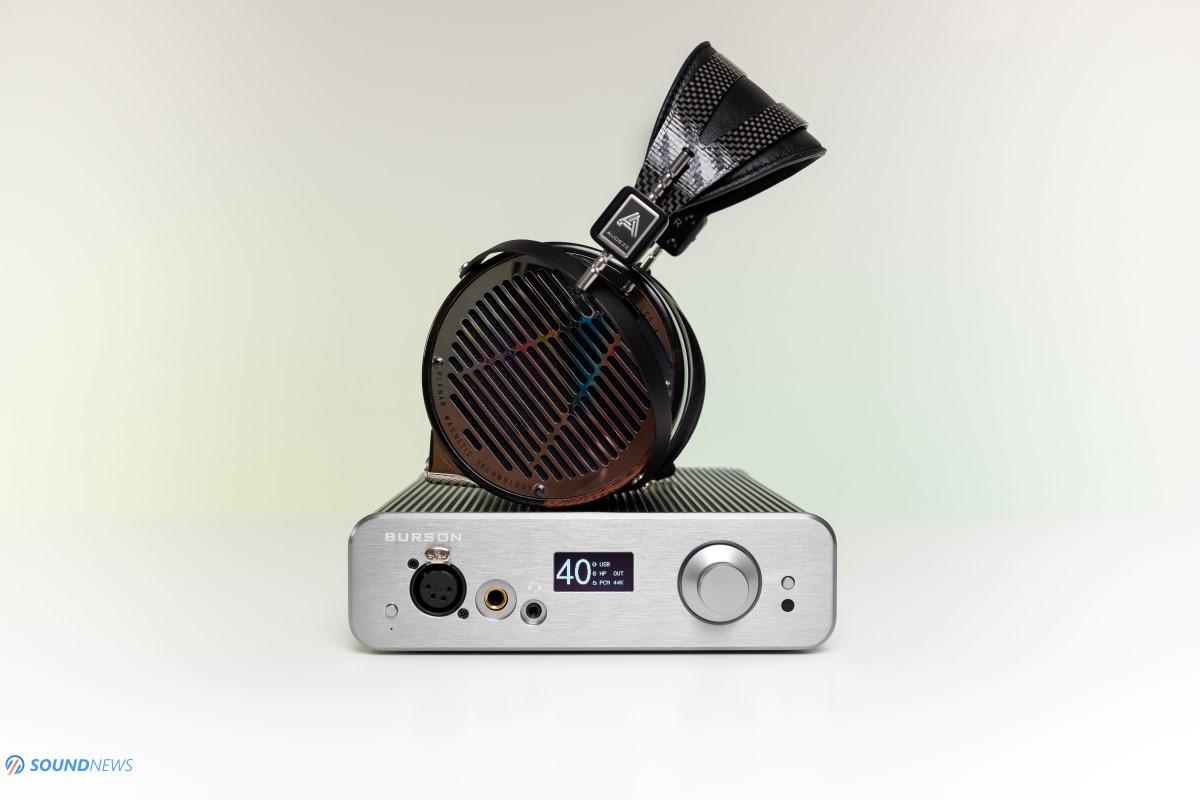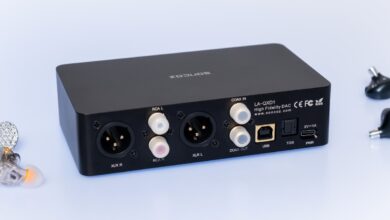
My Video Review:
At the end of 2019 I was given the honors for a world-premiere Burson Conductor 3 Reference review, which changed the way I am looking at ESS Sabre-based DACs/Preamps and headphone amp combos. From linear, lean sounding and straight as a line in terms of frequency response, Conductor 3 was seriously breaking those rules as it was highly engaging and natural sounding. It performed more like an advanced R2R design with a powerful Class-A output stage than like a typical ESS Sabre based all-in-one device.
I have quite a history of reviewing Burson Audio gear as almost everything they released along these years was tested around here or on our defunct sister website. Believe it or not, my first ever written review was for my own Burson HA-160D that I’ve been using for a couple of years. Later on, it was replaced with another Burson device – the mighty Conductor 1 that started a true lineage in their line-up. Even in those distant times, I knew that Burson doesn’t want to have “yet another boring ESS Sabre based device”, they always wanted something different, something that would stand the test of time, something that would remain at your place for at least few good years, without thinking of an upgrade path anytime soon.
At some point their motto was: “Burson sounds good like solid state should” and I do certainly agree with that. Burson has a long history of working with solid-state analog circuitry, they know precisely what it stopping a lot of amplifiers, pre-amplifiers and even digital sources from achieving legendary status – and that are their off-the-shelf low-quality operational amplifiers or op-amps for short, that are working as huge bottlenecks, especially when it comes to high-end audio. Even from their inception, Burson developed a world first all-discrete op-amp that preserved natural harmonics, that had much higher bandwidth compared to any other op-amp and of course provided higher current and voltages for a better performance in all those devices. It is not surprisingly at all seeing people upgrading their audio gear with Burson discrete op-amps, in the DIY scene everyone knows about Burson Audio. Hell, I’ve upgraded myself multiple devices with those colorful op-amps, it’s a cheap way of seriously improving your beloved amplifier, preamplifier or DAC.
I was happily using that HA-160D for a few years, because I knew it was an end-game solution for headphone enthusiasts. I felt the same with their Conductor 1 and I certainly have the same feelings about the latest Conductor 3 line. I felt all the care and all the thinking that went into making a long-lasting product as Conductor 3 Reference.
The unit that I will be testing today is part of the Performance line – it is a smaller re-design of the Reference line, which I’ve tested last year. Burson may dropped one DAC chip and lowered the number of its Max Current Power Supplies (MCPS), they made it smaller and lighter weight, they slashed its price too but I’m sure they didn’t slash anything in the sound quality department.
Let’s dive deep and see for ourselves how close it comes to the Reference line and if it inherits the same naturalness, unparalleled impact and of course a wide-spread soundstage as its bigger brother had in its veins.

Conducting your stereo setup
Burson Audio has multiple devices ranging from discrete op-amps, power amplifiers, headphone amplifiers, DACs and then they have all-in-one units like the Conductor series. Their Conductor line-up is currently their flagship line-up and anything with a Conductor name in it – is part of their best attempts at delivering high-end sonics and Conductor 3X Performance (3XP from now on) is certainly that kind of device.
In time, we have tested multiple all-in-one devices, but not a single one excelled at its every feature. Be it expensive like my own $3000 Matrix Audio Element X or much cheaper like $599 Topping DX7 Pro and anything in-between had unforgettable flaws that made them good but far from great. Element X is only half-decent with its headphone output, Topping DX7 PRO had a very high output impedance making it sloppy sounding, lacking punch and control with low-impedance desktop headphones, Mytek Brooklyn DAC+ had a very noisy headphone output and a brighter sound signature. On the other hand, every single feature of the Burson Conductor 3XP was tuned to perform at the highest standards. Its preamp, headphone amp and DAC sections weren’t overlooked at all and as my review will soon prove, it worked great in a speaker setup and in a headphone setup too.

Burson VS Burson
If you are wondering what exactly is the difference between the Reference 3XR and the cheaper 3XP that I am testing today, here is a detailed breakdown on their internal components:
- On the DAC side, instead of two ESS9038Q2M DAC chips, the smaller 3XP uses only a single chip. Don’t get upset my friends, as absolutely the best delta-sigma DACs I ever tested around here (mind you, I’ve tested a lot of them) – were using only a single chip. More is certainly not better; the implementation is by leaps and bounds more important.
- The bigger 3XR has 5 Max Current Power Supplies (MCPS) instead of 3 on 3XP, which means that its display, DAC section, analogue left and analogue right are all separated on 3XR for a lower channel crosstalk and impedance.
- The power output dropped slightly too, from 7.5Watts in 16 Ohms, it now sits at 6 Watts on the balanced output and from 580mW in 300 Ohms, it dropped to 330mW. Not a huge difference if you ask me and as my tests will prove later on, 3XP is more than capable of powering even the most demanding headphones.
- 3XR has two XLR analog inputs, meaning you can use that one as a dedicated headphone amp or preamp, bypassing its internal DAC section. 3XP doesn’t have such inputs, but it can still work as a dedicated DAC, as a DAC + Preamp or as a DAC + Headphone amp, it is really up to you.
The amazing part is that both units are sharing the same DNA, they have the same Cool Case which is by 300% more efficient at heat dissipation. The case has rounded edges so your will not cut yourself or chip your headphones while handling them around. They both use their newest generation of discrete op-amps – their V6 Classics and V6 Vivid, they both use the same Max Current Power Supplies, the same Bluetooth version and chipset and most importantly the same DAC chip, XMOS receiver and the same fully discrete Class-A output stage. How about the price? From $2199 on 3XR, it nose-dived to a much more affordable $1399 price point and that is a really positive and encouraging thing.

Unboxing Experience
It came double boxed as all high-performance units are coming nowadays. The product box has a lot of white foam inside to protect the unit during shipping. Besides the unit itself, there is an accessory box nearby, in it you’ll find: a high quality aluminum remote, a pair of RCA interconnects, a torx screwdriver to open the case, an extra mini-fuse, a USB Type-C cable, an external power supply and the power cable that attaches to it, a certificate of compliance, four JRC 5532D op-amps from New Radio Japan – Burson doesn’t recommend using those as they are much worse sounding compared to V6 Vivid. However, you will need them to test the op-amp sockets if something goes sideways. In case you’ll want to connect your brand-new 3XP to your smartphone, Burson also added an USB Type-C to USB type-B female adapter and in case your gaming headset is not coming with a 4-pole 3.5mm jack, they added an adapter that splits that 4-pole 3.5mm in two 3.5mm jacks – one for your microphone and one for your headphones.
Mighty Odin! That’s lot of accessories if you ask me, it’s more than enough. I’m pleased the most about the metal remote which I can use in a speaker setup and the included RCA interconnect cable is also a worthy addition.
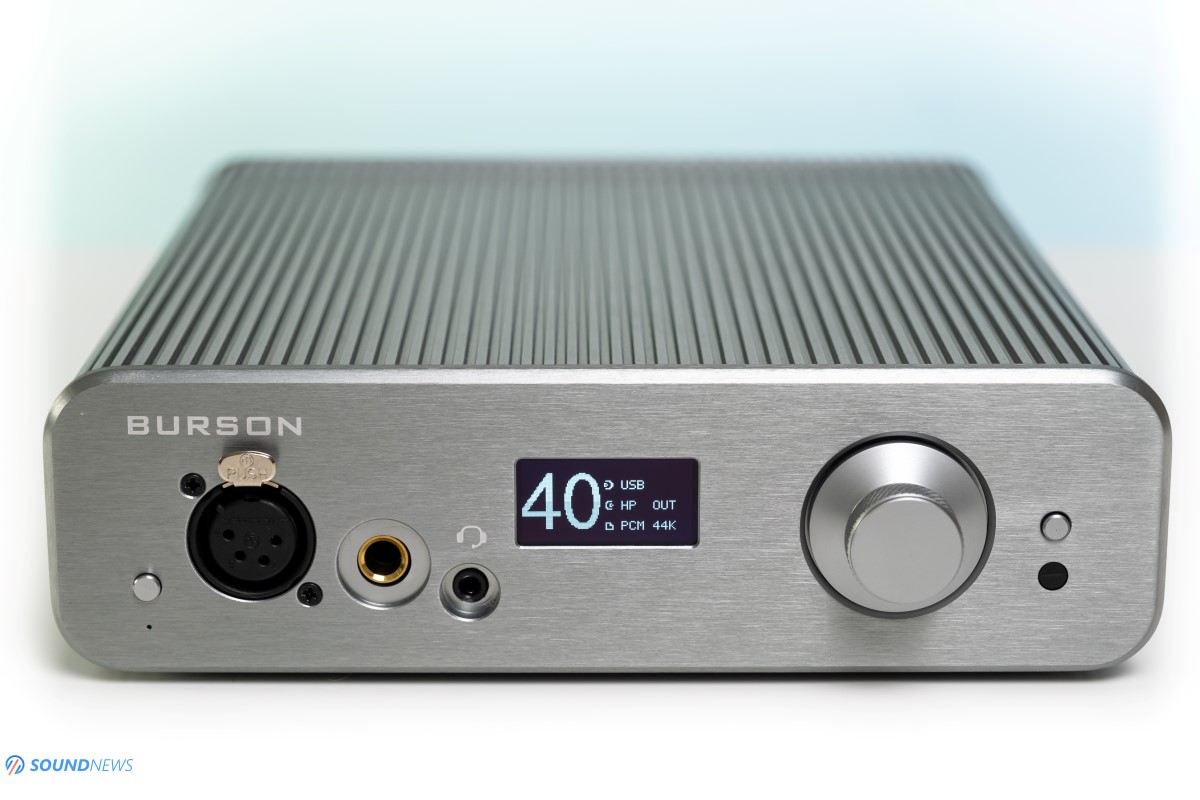
Design & Build Quality
Conductor 3 Reference and Performance units are the first ones, in almost 10 years that received updated looks, with redesigned cases from the ground up. On the inside, every single internal square inch was used at maximum potential, that is some clever engineering if you ask me. With this case, Burson doubled the surface area so their newest generation of Conductors are way more effective at dissipating heat.
I think it looks unique and it’s standing out with those aluminum fins that are wrapping the device entirely, the threaded volume wheel is amazing to the touch too, it reminds me a lot about another hobby of mine. I like that it has a decent amount of resistance so I could slowly and gradually rise that volume with sensitive headphones. Burson finally hid those screws on the back of the unit, it looks much simpler and more elegant this way. Its case is of course fully milled on a CNC machine and I personally enjoy its raw aluminum look without any kind of paint over it. Burson put some decent sized rubber feet underneath it, but since it works in Class-A, heat dissipation is still an issue in a crowded office like mine and I would advise buying separately some IsoAcoustics ISO-Puck Mini – they are fairly cheap but well worth the money. Put them under 3XP for a much better heat dissipation and as a small bonus, those will absorb micro-vibrations too.
Having a medium sized case (250 x 200 x 60 mm) and weighting only 3 Kg (6.6 lbs) it is neither big or small and can be easily arranged in a small working space or in a cramped stereo setup. Burson had an interesting button on their bigger 3X/3R units that would flip the screen 90 degrees so you could use it vertically for a better air flow and for a smaller foot print. You could certainly do the same with 3XP, but there its screen can’t be flipped.
Overall, I do like its look, its case screams high quality engineering, everything is tight and doesn’t wobble at all, the raw aluminum look is interesting to look at, I certainly like it better than an anodized aluminum surface.

Controls & Connectivity
3XP is a fully balanced input to output device and as such, on its front plate you’ll find a 4-pin XLR headphone jack, a single-ended 6.35 mm (1/4”) jack, a 3.5 mm (1/8”) microphone input, gaming headsets with 4 pole jacks should work nicely with it. In case your headset uses two jacks instead of one, you can use the included adapter in the package for some non-stop action.
On the left is your power On/Off button and on the right is your menu button, a monochrome OLED screen is located exactly in the middle (for my dear OCD friends), it is fairly small, but visible with a decent resolution. It will show all the important stuff as the volume position, the selected digital input, analog output and the sample rates. The volume wheel works in digital domain and has 99 steps, so no more guessing how much power is there left on tap.
On its back you can spot 3 digital inputs: USB Type-C, Optical and Coaxial, plus a Bluetooth socket with an antenna on the right. Since it can work as a dedicated DAC or as a DAC + Preamp unit, you can also find two pairs of analog outputs – a standard RCA output that can be volume controlled or fixed and a XLR fixed volume output. It follows international standards, so at maximum volume it will offer 2V on RCA and 4V on XLR.
As you can see, it is super versatile all-in-one unit, it can work as a stand-alone DAC, DAC + Preamp or as a DAC + headphone amp and it can even receive lossless music signals via Bluetooth 5.0 thanks to that rad LDAC codec. A pretty neat wombo-combo device.
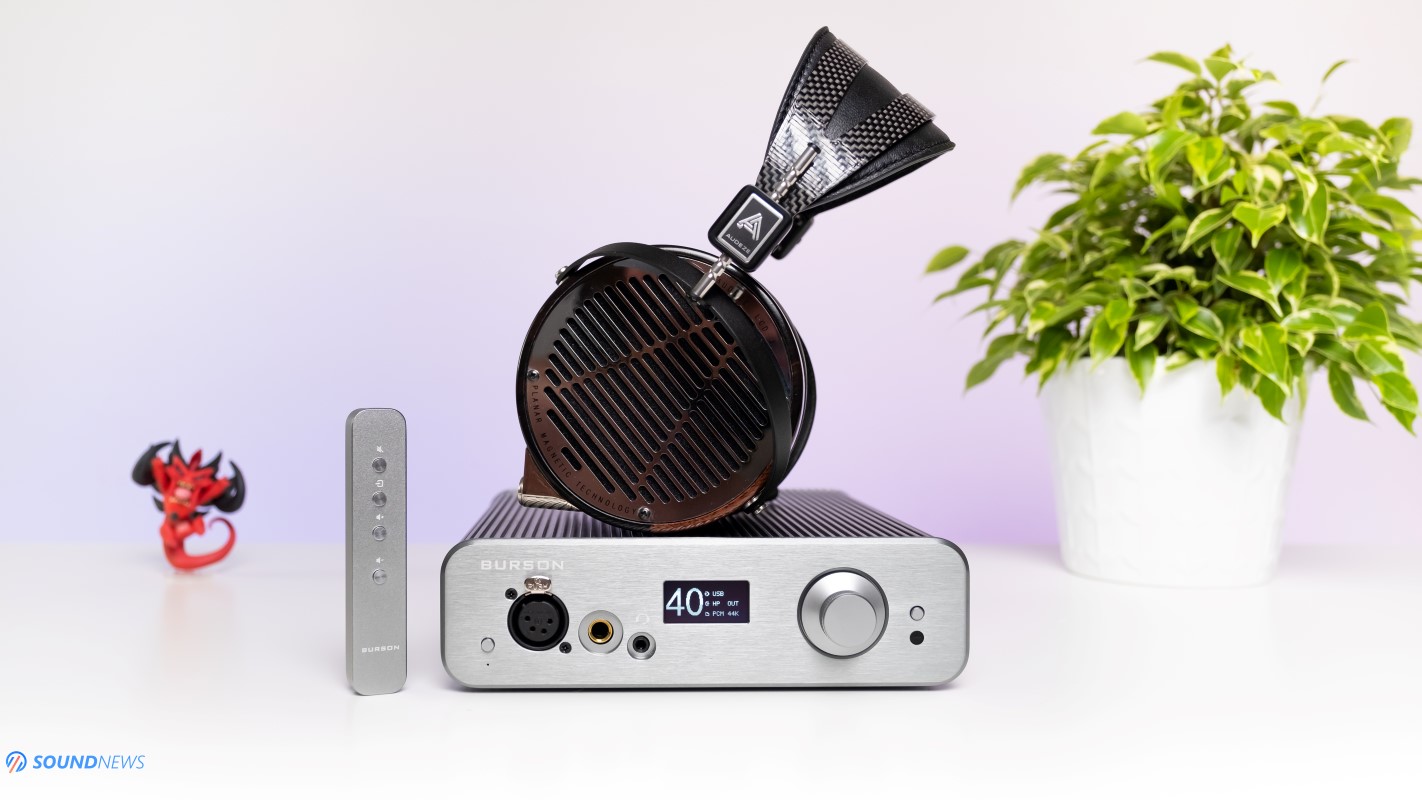
Display settings
With the included metallic remote you can change its volume level, mute or unmute it, change the selected input and rest of the settings are controlled only by entering the user menu, where the following settings can be accessed:
- Input – USB, Bluetooth, Toslink, Coaxial – very straightforward
- Output – HP Out, PRE Out, DAC Out – self explanatory
- Gain: High and Low – this setting impacts your headphone out and also the Pre out
- FirFilter – you can select your desired digital filter that are built-in directly in the ESS Sabre DAC chip, there are 7 filters to play with, but the sound difference between them is slight at best.
- DPLL (DSD) – OFF, Low, Mid and High (default) – the higher this setting is the higher the jitter rejection will be for DSD files
- DPLL (PCM) – Off, Low, Mid or High (default) – the same but for PCM files
- Emphasis – Off (default), On – ON position rolls-off the treble by about 5db at 10 kHz and by about 8 db at 20 khz. I strongly recommend leaving it in OFF position.
- Reset Set: Yes or No – resets to factory settings
Most of these settings are set and forget, but thumbs up for team Burson for implementing such a nerdy user menu. Okay everybody, it’s time to hit some ear-drums!

Sound Performance
I. Preliminary Impression
I made myself comfortable sitting in a sweet spot on my couch, I chose my favorite playlists, I calmed my spirits, I pressed play and I closed my eyes. Literally the next few seconds I’ve felt a powerful, visceral and bottomless bass, a warmer and a smoother midrange, some textured and extremely snappy sounding treble followed, all of that plus an iron grip over the speaker or headphone drivers were the first words that came into my mind. It had a faster pace and a very engaging type of sound, it made me tap my feet and move my head like I was part of a dance contest. From a plethora of all-in-one devices that I’ve tried, only three of them had the same warmth, full-bodied and fast paced sound. The stage size was also something special, unlike many others, it stretched in all possible directions, unlocking a true 3D image in front of me. It reminded a lot about the Conductor 3 Reference, about the Flux Lab Acoustics FCN-10 and of course about that Audio-GD D38 (fully upgraded version). It so happens that only these three devices were working in Class-A, they all despised those off the shelf op-amps, ditching them in favor of all discrete components (like Bipolar or J-fet transistors).
After living for a longer period of time with a super linear setup like the Matrix Element X that feeds an achromatic sounding Benchmark HPA4, I almost forgot how fun headphone listening could be. This small Conductor is really possessed by some kind of beast inside that whips your tunes, makes them snappier, much richer in their tones, everything became bigger, meatier, bolder and ballsier sounding. It is a type of sound that you want to listen to for long periods of time, instead of just analyzing every corner of your music. It is very much against being linear, boring and ultra-smooth sounding. It doesn’t tilt at all towards the bright and thin sounding camp, you will not find anything like that in here.
Yes, it sounds so “Burson” to me…even with my eyes closed I could swear that I am listening to a Burson made device, it is really that obvious even without any kind of burn-in.
I am going to apologize to the Burson team, because I’m listening to this one for about 2 months now and yet after pressing play in any of my setups, I simply want to listen to my music without writing a single word about it. I’m trying to gather my thoughts, I’m adding another track into the playlist, another two, another three songs and again I’m forgetting about taking notes. It simply throws me into my world, into my oasis where I could be anyone I want.
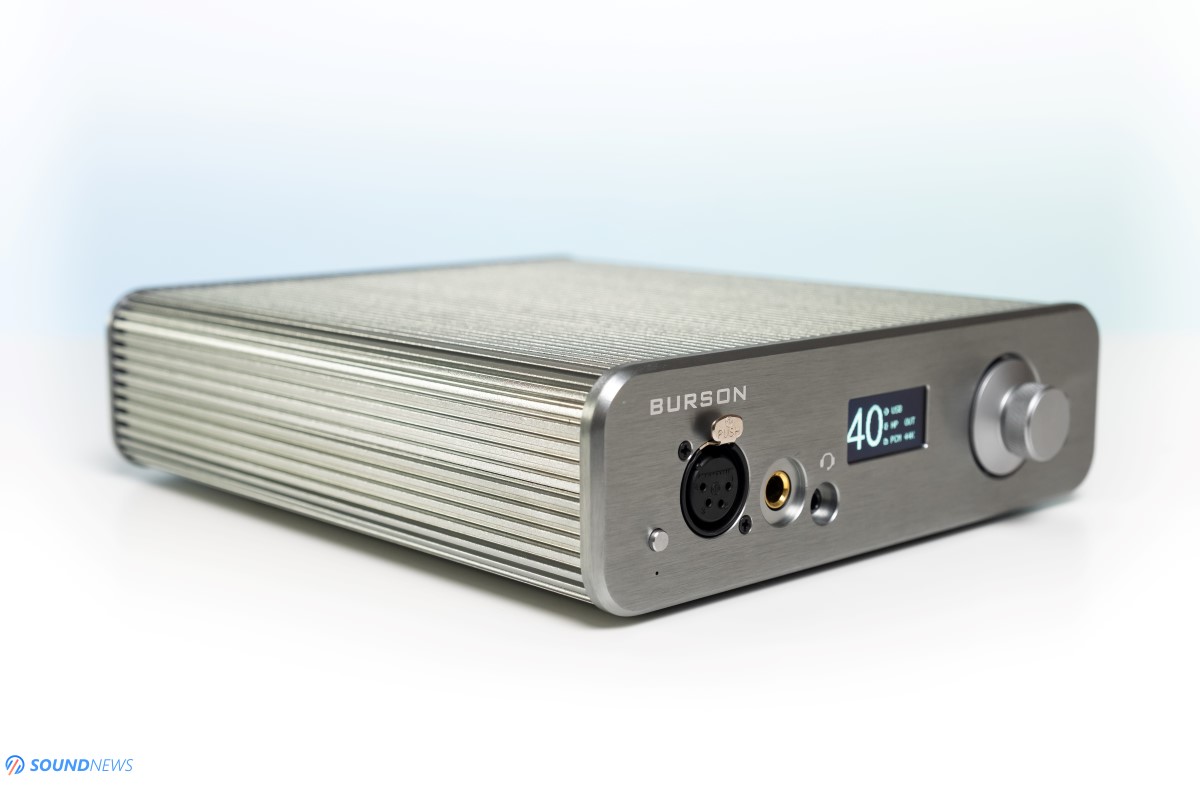
II. Background Noise & IEM Compatibility
When I was still evaluating that KECES S125 power amplifier, I thought that I should test its background in the speaker setup first. The next minute, it was working as DAC + Preamp and S125 was doing all the heavy work for the Buchardt S400 loudspeakers. The absolute first thing that hit me was that even at such an affordable price, it absolutely obliterated my own Matrix Audio Element X ($3000) working as DAC + Pre unit. I simply felt a better grip with the Burson, it was slightly more visceral sounding, more engaging and life-like in a way. Its line-amplifier is somehow better than that of the Element X and in a speaker setup I’m yet to hear a better device than the Conductor 3R and 3XP, they simply shined in a stereo setup.
When it comes to noise, I’m pretty sure that DC Servo circuits inside the KECES S125 are already killing plenty of source noise with the help of negative feedback, so the final result was a crystal-clear sound, without any kind of artifacts. It was simply noiseless and its background was really dark. There was simply an absolute silence between passages with all my music. When I’ve replaced the S125 with the Kinki Studio EX-M7 power amplifier, again its DC filtering said its last words and all I’ve heard a noise-free performance all over again with an absolute silence even at close to maximum volume.
Moving the little Burson to a headphone setup, I’ve armed myself with the most sensitive IEMs I had at my disposal: FiiO FA9 in its high sensitivity mode (16 Ohms and 113 dB/1mW) and then with a pair of Meze RAI Penta. These two are not shy at all at showing how clean your setup is, these are extremely easy to drive. I could easily damage them or even worse, my hearing, so be extra careful while driving extra sensitive IEMs with so much power. I used them only on the 6.35 mm (1/4”) single-ended headphone output and maximum I could go volume wise was 30 (out of 99) on the high gain and about ~65 on the low gain. The best past is that no matter the gain position you have plenty of play on that volume wheel, it doesn’t get way too loud fast and even on high-gain there is plenty of steps until you reach your desired volume.
When it comes to its performance, no matter the selected gain and no matter the volume position, there was a faint low intensity hum, but you can spot it only if you are using memory foam ear-tips and only if it is an absolute silence in your room. If anything goes around you, you can’t spot it. I will be honest with you, it’s very faint, it is lower in its intensity compared to the rest of class-A amps, it’s even lower compared to its bigger brother C3 Reference. It does not bother me as after I am pressing play, there is no way I can spot it again. I need to mention that it’s there in very small doses and Burson probably tuned this one to work better with IEMs this time around and I genuinely enjoyed my time with it even with such ultra-sensitive loads. The good part is that no matter the volume level or the gain position, the faint hum doesn’t increase its intensity, it stays absolutely on the same level. I had a very different experience with the rest of class-A combos, both Flux Lab Acoustics FCN-10 and the Audio-GD D38 were increasing the noise floor when I was increasing the volume.
The absolutely greatest part, is that its fun and engaging nature, carried over to these IEMs. Meze RAI Penta is a smooth sounding IEM, very reminiscent of Empyrean with that relaxed and easy going sound, but on the little Burson those transformed into something else. From smooth and slow, they started hitting harder, increasing their speed and pace. From a dormant and almost boring performance, 3XP infused some fun in these and made them much more enjoyable in the long run.

III. Resolution & Transparency
If we are talking about a top-of-the-line ESS Sabre design with a fully discrete Class-A output stage, then we are talking about a bad-ass resolution and a see-through transparency. It wasn’t a surprise when I connected a pair of Audeze LCD-4, then a pair of Hifiman Arya and then I’ve heard the same breathing and transparent type of sound on a pair of Kennerton Wodan. These trio of headphones are currently extracting more information compared to my S400 loudspeakers, so the biggest part of this test made was made by using headphones.
Pneuma By TOOL (Tidal / Spotify), is one of my reference tracks when I’m testing a new diaphragm or a new DAC. It plays well with the left to right positioning and puts quite a lot of sounds around you. The treble is raw and impactful, both guitars are slamming pretty hard, it almost becomes tiresome. Normally, you should be able to look deep into this song and hear those drums extremely clean and detailed with a punchier rendition. Easier said than done, because this song doesn’t sound the same with most all-in-ones. While this is not a reference track, it will put a heavy burden on the DAC, amplifier and diaphragms. The little Burson played it clean, vivid, with plenty of impact and with a very precise note positioning around me, I sincerely expected no less from a design like this.
Brothers in Arms by Dire Straits (Tidal / Spotify) is another reference song with a close to perfect rendition of trebles, guitars and with a perfect decay of the notes. The incredibly high dynamic range of this track made me sometime jump from my seat, this song surprises with its naturalness, yet with perfect technicalities and super high dynamic swings. I wish all rock would be recorded this way. The little Burson simply expanded this song, put everything in front of me and let me pick the notes I want to look at. It worked as a magnifying glass for this track, absolutely everything in here was crystal clear, precise and very airy. I’ve had a strange feeling that those sounds are not even touching each other, such a huge void space was sitting between them, it’s fascinating.
All in all, 3XP has a high level of resolution and transparency and it is approaching easily high-end DAC territory. It is still not on the same level with the best I’ve heard, but it’s real close and I could easily live with such a natural sounding DAC/PRE/HP Amp unit.
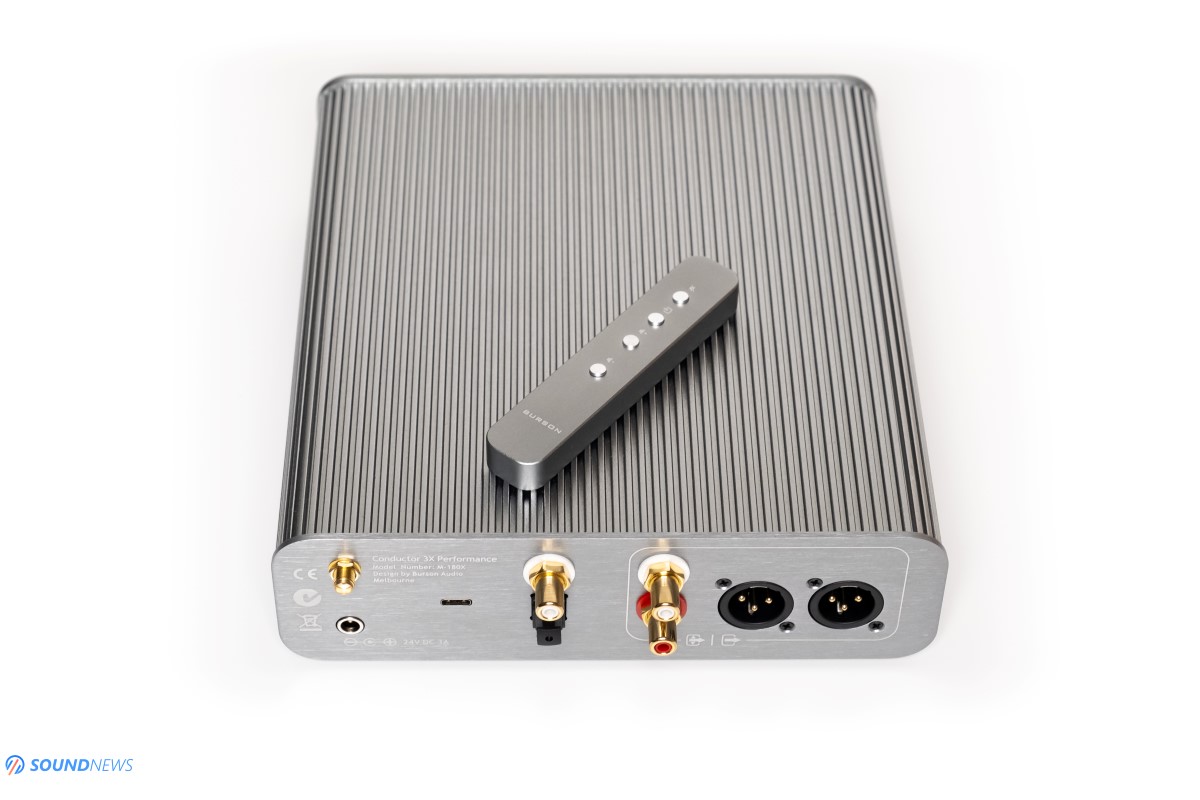
IV. Transient Response
Transient response feels at home with a device like this, it is like asking a boxer if he knows how to land a punch. In this regard, all other devices I’ve tried that worked in Class-A, were absolutely fabulous in this department. Yes, every single one. I’m yet to hear a better thunder like slam like that of the Flux Lab Acoustics FCN-10. Burson Conductor 3 Reference that I’ve tested last year was very close to that one. The newest Conductor 3X Performance has exactly the same DNA, it is also a natural pugilist with a hairy chest, being mean, punching hard and going really fast when a track asks for it. Here are just few examples:
Mombasa by 2Cellos (Tidal / Spotify) is an extremely textured and snappy song, it is incredibly engaging and hard slamming from start to finish. Then those guys are slapping the cello strings, an enormous amount of air hits my eardrums with an incredible force. The slamming intensifies close to the end that I almost wanted to lower the volume because of those high dynamics that were relentlessly increasing their pace. Mind you, this is all happening with only two cellos and yet so much joy and so much power and dynamics can be obtained with only two instruments, it’s mind boggling!
Vivaldi Storm (Tidal / Spotify) is another amazing performance by the same duo. It sounds so incredibly alive and punchy. Those string slams felt so visceral, so raw and crude, my ears started waving like I was listening to an angry metal remaster of a Vivaldi masterpiece.
I want to outline, that with a powerful output stage consisting of a discrete circuitry providing constant Class-A power to those headphone drivers – it is like taking a sheet of paper and hitting it by a hammer. You don’t really need some powerful metal or electronica songs to unleash some punchy notes and a faster pace. You simply need a device that knows how to accelerate and decelerate in an instant. In the slam department, it actually outperforms my own $3000 Benchmark HPA4, its bigger brother did absolutely the same. It literally changed some headphones to unrecognizable; I can hardly perceive those Hifiman Arya. I find them engaging only with very few amplifiers and 3XP was one of the nicest pairings with it. The li’l Burson will never sound loose, uber-smooth or plain boring, it can be anything but that.
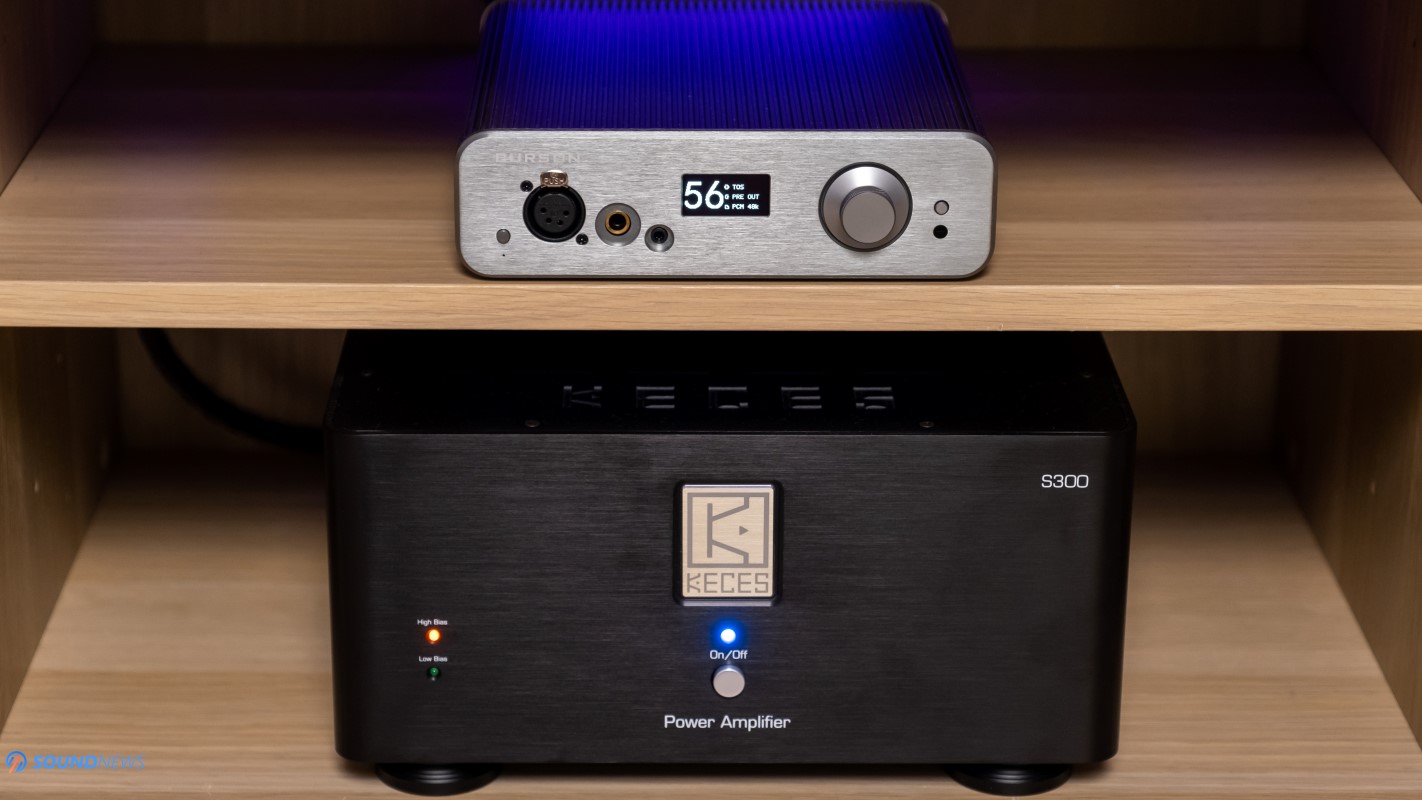
V. Soundstage & Depth
As I’ve said it in my preliminary impressions, 3XP draws a bigger picture in front of the listener and it will carefully arrange all those notes around you. You can pick those sounds like cherries from a tree. When you have a detailed and transparent sound, plus a very energetic sound, pushing bigger quantities of air, it is absolutely normal to experience a wider and a deeper stage, without anything staying in front of you and the music. I personally never understood headphones like Hifiman Arya until the end, their soundstage is…weird to say the least with most solid-state amplifiers. On tube amplifiers with big transformers on top, they were sounding more natural, more expansive, more real and much closer to the rest of my open-back headphones. With both Burson designs, Hifiman Arya are again coming to their senses, I can now understand them with a design like this. I can’t spot that limited left to right soundstage anymore, it is much bigger now. I simply took few steps behind and I can now better see the play that is happening in front of my eyes. Instead of looking at a big screen, it feels like I’m looking at a huge cinema screen with more things on my left, on my right, on top of my head and bellow my chin.
Add that close to zero channel crosstalk on the balanced output and we have a winner on our hands not only in terms of speed and impact but also in terms of stage size and depth. 3XP is clearly one of the nicest solid-state all-in-one units I came across. Even in terms of depth, pin point location of a particular note and obviously in terms of stage size it is quite impressive. I’ve had the same feelings with the rest of my headphones, like the void space between my left and right ear was increasing in volume.
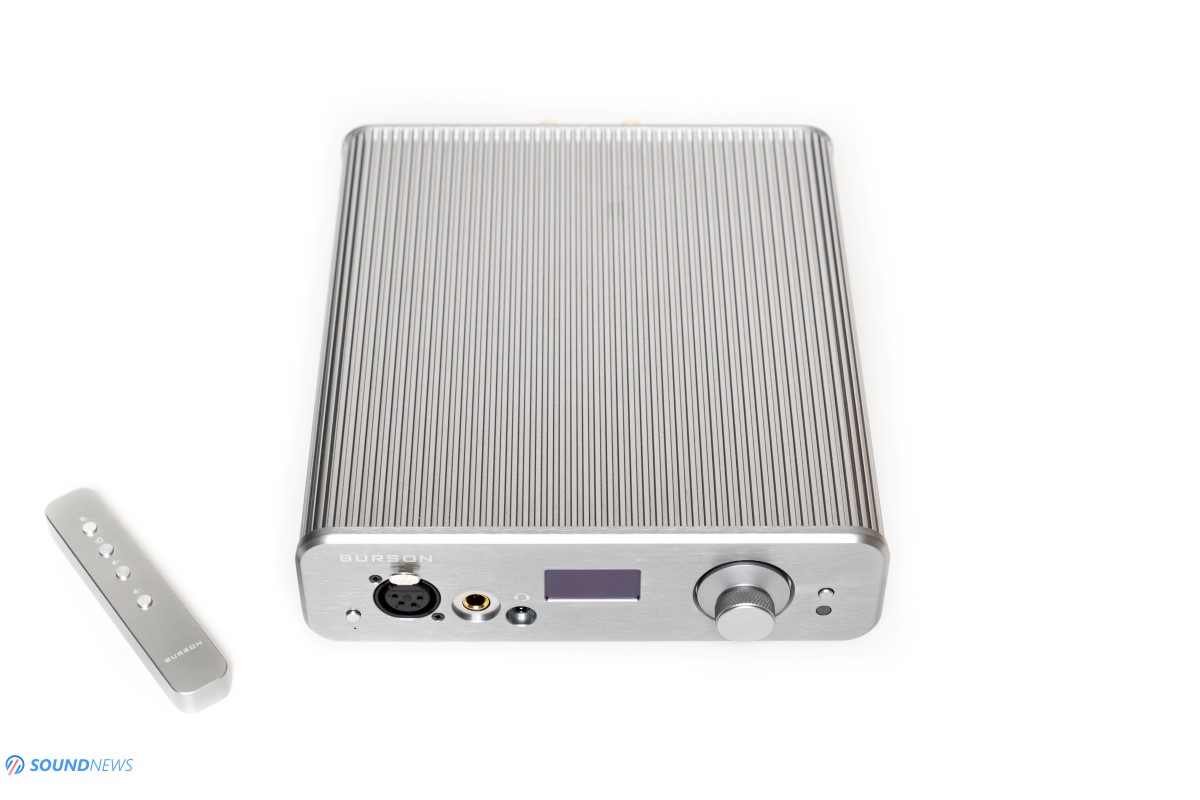
VI. Frequency Response
The Conductor 3 Performance that I am testing is having four V6 Vivid op-amps inside, you can mix and match with their V6 Classic op-amps for a different sound if you want. Burson is even selling a bare bones version with those nasty JRC op-amps installed, but I am strongly advising against that version.
With V6 Vivid installed, the bass and the treble are standing out immediately. Not that midrange is not great too, but it isn’t as obvious at those bold extremities in the frequency response.
Bass is oozing bad attitude, it hits pretty fast and slams like a hammer too. It is also a clean type of bass, that is layered and breathes. Part of that incredible punch is due to its deep sub-bass performance that felt bottomless, but controlled to the lowest octaves. I’m going to say that it is by a hair elevated even, especially the mid-bass is adding quite a lot of warmth and bad attitude. It is quite difficult having a perfect dose of warmth and cleanness in this region, but I think Burson managed to balance its performance. Bass is strong in this one, much stronger compared to units like KECES S3 ($1500), Mytek Brooklyn DAC+ ($2195) or Benchmark DAC3 HGC ($2199). It depends on your taste; I personally like a fuller bass performance in detriment of a thin and boring type.
Midrange is different sounding compared to usual ESS Sarbre designs, it is much fuller, but I wouldn’t say it’s really warm or anything like that. It is warmer compared to aforementioned units but colder to say a nicely designed R2R DAC. There is however a lot of naturalness in this one, Class-A is leaving a big stain in here, plus that all discrete topology is also adding a lot of magic in here. Midrange is rendered clear and has the right amount of naturalness. Having a big power reserve, the voices felt powerful, a tad heavier in their tonality. I never spotted dry or thin midrange in this one, it will always infuse a bit of its own medicine, improving the midrange presence and make it more real. From dry sounding tracks it would make them linear, neutral sounding tracks would sound warm and full-bodied in return and this can be said about the biggest majority of all discrete amplifiers.
Treble is standing out immediately, sometimes it jumps before those bass lines. It offers a lot of information in this region and if you’d like less treble presence, simple swap 2 Vivid op-amps with 2 Classic op-amps and the problem is solved. I don’t find it bright sounding per say, nothing like that. There isn’t that nasty ringing in the mid or upper-treble, but still it’s very defined and almost sharp sounding in here. For the record, the rest of the Class-A gang, like the Audio-GD D38 or Flux Labs Acoustics FCN-10 felt less extended in this region, gently rolling-off the upper treble. That roll-off is not happening in here, it will render your treble even past top-octave with lots of details and shimmers. I can definitely say that it approaches the treble performance of my Element X ($3000) which is a good thing to say about the little Burson.

VII. Wireless Performance
I want to remind the Burson team that Qualcomm CSR8675 is not capable only of AptX-HD – that is a decent codec, one of the better ones actually, but it is not the best. It also supports LDAC too, which is considerable better, in the high-quality mode it will receive up to 999 Kb/sec which can be considered as lossless quality wireless transmission, unlike AptX-HD that is limited only to 576 Kb/sec.
I will say in advance that I’ve tested this chipset multiple times, more like 15 times in different devices. Some of them without an antenna and some of them with an antenna that works as a signal booster. Luckily, our test unit uses a nice antenna and I know very well what to expect from it.
My smartphone is LDAC, AptX-HD enabled and supports Bluetooth 5.0, of course LDAC came up on that screen and it simply worked flawlessly from that moment. I used Tidal Hi-Fi on my phone and I streamed few songs directly to it. The wireless range was huge and more or less in line with the rest of those devices that also had a BT antenna.
The signal was rock steady in my flat even with 2 concrete walls and 10 m distance between us, only in the last room about 15 meters away and with 3 concrete walls between us, the signal would drop a few beats. In an open area it performed excellent even at more than 20 meters away.
As for music listening, with regular CD-quality lossless files (16-bit, 44.1 or 48 kHz) I couldn’t make a difference between the wired and wireless mode. It sounded maybe just a tiny bit smoother and relaxing in wireless mode, but the difference was really small, I was guessing at that point. Going up the ladder and listening to 24-bit files mostly in 192 kHz, the difference grows in favor of wired mode, which sounded a little crisper and more engaging. Especially the bass and treble were sharper sounding in the wired mode.
All in all, it performed absolutely great in Bluetooth mode and 3XP seems to be a very good wireless receiver sitting in the living room. It can’t be considered as a full-blown streamer, because Bluetooth still loses bits of information, for a bit-perfect wireless connection Wi-Fi will be needed, but incorporating a full-blown streamer would probably double the price of the little Conductor 3 Performance. In my eyes, it is more than enough as it is.

VIII. Comparisons
Burson Conductor 3X Performance ($1399) VS Flux Lab Acoustics FCN-10 ($1349)
In terms of features, 3XP is having an LCD screen where you can choose the selected input, it has slightly more digital inputs including a Bluetooth input. It can also be used as a DAC + preamp in a speaker-based setup, a feature which FCN-10 doesn’t have. Burson guys went with a single ESS 9038Q2M which worked absolutely great with their class-A amplification and with their discrete op-amps.
FCN-10 might not have an LCD screen, an optical, coaxial and Bluetooth input, but it has a simple streamer inside working via Ethernet or via Wi-Fi, it can accept music from external USB flash or HDD drives and play it back without the need of an OS or of a computer. It supports DLNA and AirPlay, you can even link a Tidal, Qobuz or Google Music account to an app like Bubble UPnP and control everything with your smartphone. FCN-10 is almost a full-fledged streamer, on the other hand 3XP has a lot more features, inputs and outputs.
In terms of power, 3XP is offering about 6 Watts of power and it drove all my headphones with an absolute control and authority. It played almost perfect with IEMs too, there would be still be a faint noise before pressing the play button. I like a lot how 3XP performed with big cans, it had a lot of headroom left on tap and every single headphone from my stable was driven to its maximum potential. At about 65% of power, it was driving those Audeze LCD-4 and Hifiman Arya like it was nothing. I liked a lot that 3XP has an LCD screen where I can perfectly match the volume I wanted. It also has quite a lot more digital inputs, I can use it with my TV, with a receiver, with a gaming console, it can be used with digital transports via coaxial. It has a metal remote too that was priceless in stereo setup. The little Burson has a very good preamp section which worked great in my speaker setup, FCN-10 doesn’t have this feature. 3XP even outperformed my own reference unit as a DAC + Pre unit as it sounded more fun and engaging. As a DAC only device, Burson sounded crisper, more detailed, offered additional layers of information and it was more transparent too. Flux would be less impressive in here and its biggest drawback is actually its DAC section which is good, but not reference sounding.
FCN-10 with its 16 Watts of Class-A power felt more powerful (obviously), dynamics went through the roof, it was oozing bad attitude, it sounded even nastier from the first seconds. It slammed harder, it offered better dynamics, these rose higher and faster with my music. I felt a slightly better engagement factor and it made me feel like I’m the king of the hill. Both units are having good DACs sections so in terms of depth and soundstage size I would put them both on the same boat, with just a mention that FCN-10 sounded by a hair deeper and wider especially with live music but the 3XP was clearer, more detailed and more transparent sounding which is more important as a DAC only device. In terms of frequency response, they both offered everything from the lowest notes to the highest octaves, so it’s a tie. As for the ultimate refinement and detail retrieval, I’m again placing the 3XP slightly above the FCN-10 just because it offers a clearer background with small and big cans and as a direct result it sounds more transparent, airier and more detailed.
The thing is, FCN-10 shined as a streamer via Wi-Fi and it is a better and more powerful headphone amp, but worse as a DAC. Burson unit sounded as a reference DAC offering more details and transparency, it has a great line-preamp section too and a very good headphone amp. I find them both very appealing and it comes down to personal preference and feature list.
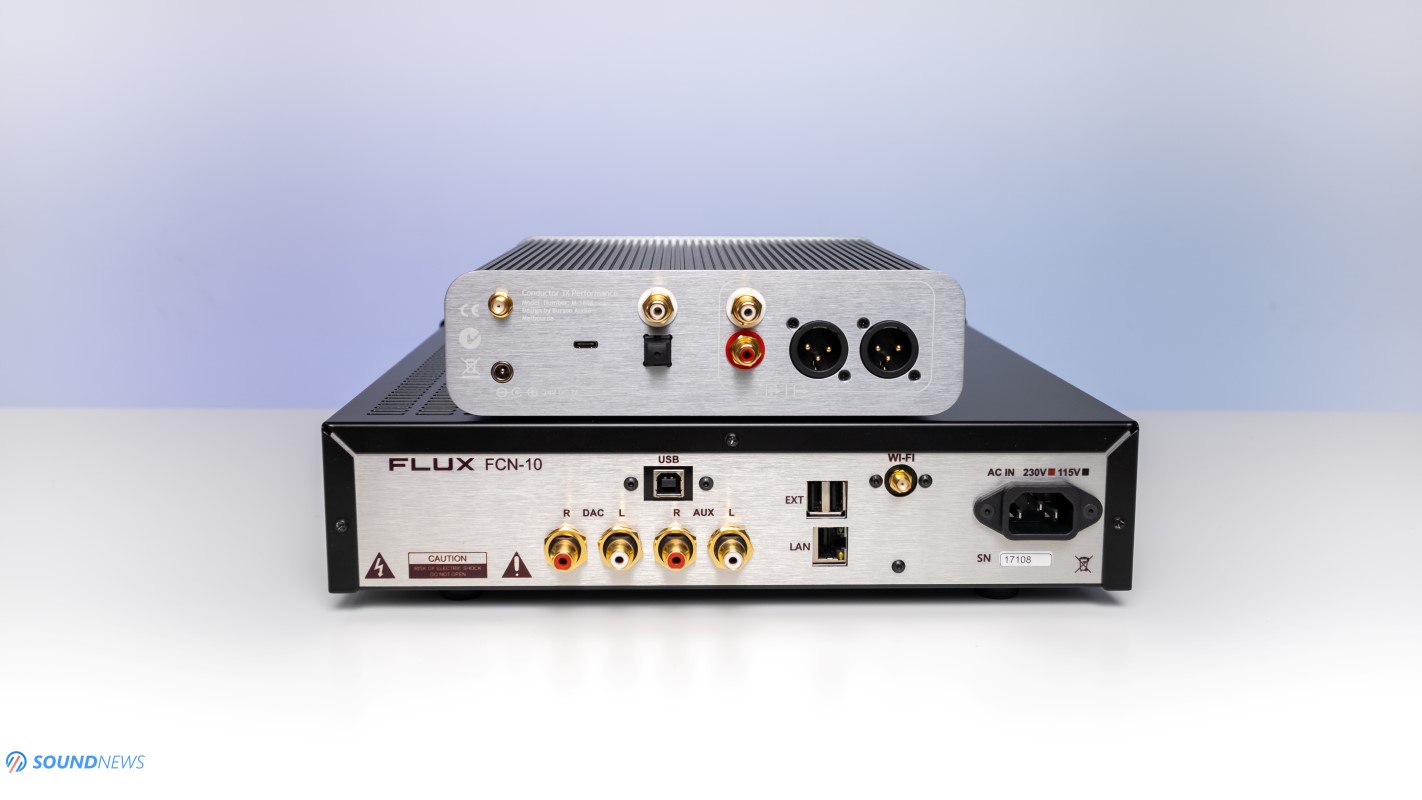
Conclusion
I have enjoyed every single second with the little Burson, not going to lie that I even liked it more than it’s more expensive brother – Conductor 3 Reference. How so? The treble is somehow more extended and I’ve heard less background noise via ultra-sensitive IEMs. The only explanation I can give is that I’ve tested a pre-production Conductor 3 Reference from which team Burson ironed out most of its flaws I’ve mentioned in my review. Conductor 3 Performance had a darker background and it was a tad clearer sounding with my speakers and ultra-sensitive earphones and at only $1399 it performed like a true-reference DAC, preamp and headphone amplifier. It is probably the first time when I’m experiencing immaculate performance on all its features, as it didn’t lack in any of those departments.
I wish I had moments like these with every single audio component that I am testing, this is what I’m talking about. It unlocked to many positive vibes, so much raw energy came out of my speakers and headphones. When I’m waking up and I feel like a need a kickstart to start my day, I know exactly what needs to be done: push the small aluminum button on the left, press play, lean back and let the dopamine do its thing, it’s that easy!
You can get the Burson Conductor 3 Performance directly from Burson Audio for $1399 by following this link, or you can contact your local distributor for a listening session.
PROS:
- Rock solid build quality, unique casework that doubles as a giant heat-sink
- Small footprint, works nicely in any setup
- A feature-packed 4-in-1 device
- Very detailed and transparent DAC section
- Works excellent as a Preamp too
- Has an extended frequency response at both ends
- Unlocked a wide soundstage and an amazing depth
- Very precise pin-point imaging
- One of the best pace, rhythm and timing I’ve heard in an all-in-one unit with an excellent transient response
- An amazing headphone amp and preamp section: hard grip, control and tons of headroom left on tap
- Sounds natural and life-like, with a great tonal balance
- Leans towards an engaging performance, adds a bit of color and nuance to your music
- An amazing Value!
CONS:
- Slight hiss with ultra-sensitive IEMs (can be solved by adding an iFi Audio iEMatch or EarBuddy)
- It’s on the hotter side after an hour or so (can be solved with IsoAcoustics Puck-Mini or by putting it vertically for a better air flow)
ASSOCIATED EQUIPMENT:
- Burson Conductor 3X Performance, Conductor 3 Reference, Matrix Audio Element X, Audiobyte HydraVox + HydraZap, Flux Lab Acoustics FCN-10
- Power Amps: KECES S125, KECES S300, Kinki Studio EX-M7
- Preamplifier: Benchmark HPA4
- Headphone Amps: SparkoS Labs Aries, Benchmark HPA4, Flux Lab Acoustics FCN-10, Burson Conductor 3X Performance
- IEMs: FiiO FA9, FH7, Meze Rai Penta, Rai Solo & others
- Portable headphones: Sennheiser Momentum 2, Meze 99 Classics
- Full-sized headphones: Audeze LCD-4, Erzetich Phobos, Erzetich Mania, Hifiman Arya, Quad ERA-1, Kennerton Wodan, Magni & Gjallarhorn, Fostex TH909
- Loudspeakers: Buchardt S400, KEF LS50W (gone)
- Interconnects: QED Reference (x2), Aune AL3
- Speaker cables: Kimber PR8, Audioquest Type4
- Power Cables: Isotek EVO3 Premier (x3)
- Balanced Isolation Power Conditioners: PLiXiR Elite BAC400, KECES BP-600
